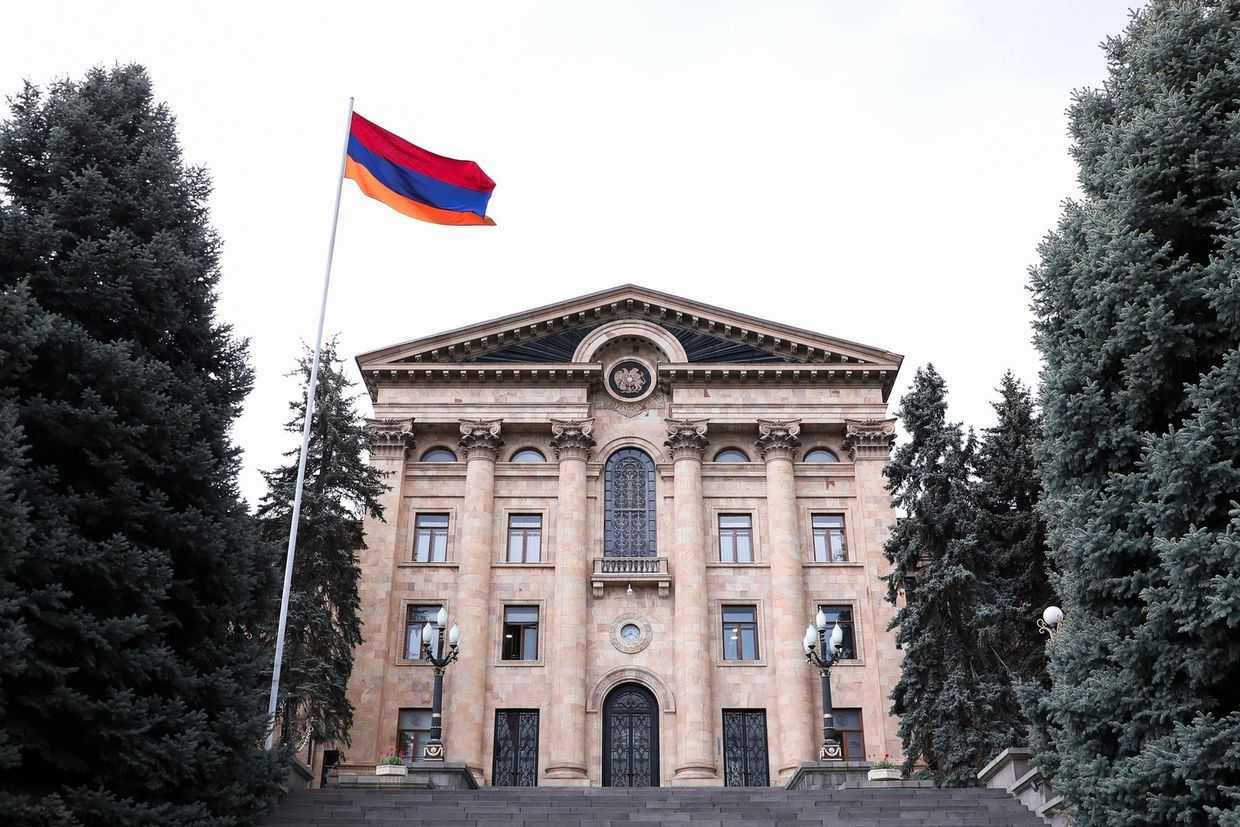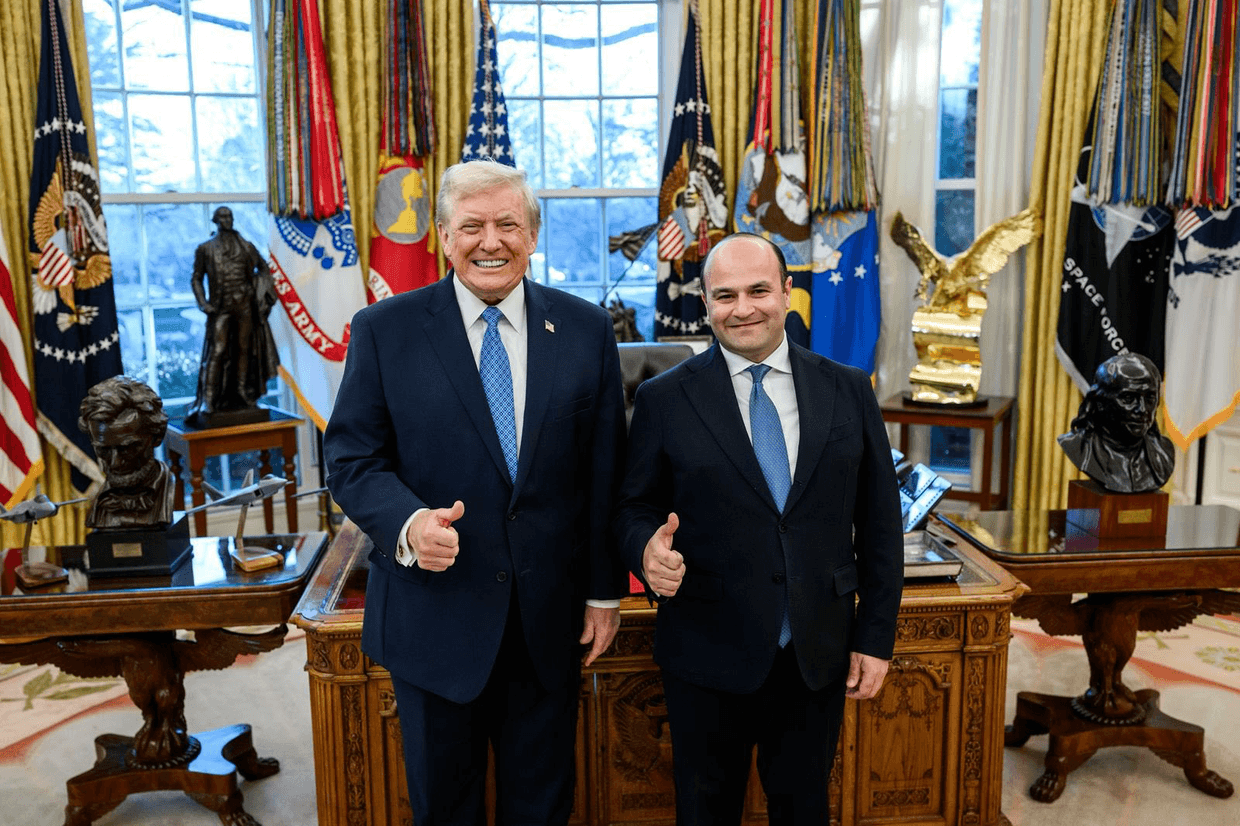
On the night of 12–13 September, Azerbaijan launched an attack on positions inside Armenia. This began the worst conflict between the two countries since the Second Nagorno-Karabakh War, which continued until the late evening of 14 September.
At least 23 localities along the Armenian border in the Syunik, Gegharkunik, and Vayots Dzor provinces were hit by Azerbaijani missiles and shelling.
A map of Azerbaijani strikes on the territory of Armenia on 13–14 September 2022, as reported by Armenian official sources and media. At least 23 localities were hit.
Armenia has claimed that 135 of their soldiers died, while Azerbaijan has announced the death of 77 service members. One civilian fatality has been reported in Armenia, and several civilians on both sides were wounded.
A ceasefire was announced by Armenia in the early hours of 15 September. Azerbaijan has not yet released any statement about the ceasefire, but hostilities have ceased.
[Listen to the Caucasus Digest: OC Media staff writers discuss the Armenia-Azerbaijan border conflict as it happened]
What happened?
At around 01:00 on the morning of 13 September, Azerbaijan accused Armenia of conducting ‘large-scale provocations’ in Azerbaijan’s Dashkasan, Kalbajar, and Lachin districts earlier that night. The latter two districts came under Azerbaijani control in the aftermath of the 2020 Nagorno-Karabakh war.
According to Azerbaijan’s Ministry of Foreign Affairs, the Armenian military had planted mines in the area to disrupt the movement of Azerbaijani troops and the reconstruction of civilian infrastructure. It also alleged that the Armenian forces had opened ‘intensive fire’ at Azerbaijani positions.
Early on 13 September, Azerbaijan launched attacks on Armenian territory, going on to hit at least 23 localities along the Armenian border over the following days, claiming throughout that this was in response to the Armenian ‘provocation’.
Armenia has denied conducting any military operations inside the territory of Azerbaijan and placed full blame for the attacks on the Azerbaijani leadership.
According to Azerbaijan’s Ministry of Defence, Armenia responded to Azerbaijan’s offensive by shelling Azerbaijani positions in Kalbajar and Lachin.
In the course of the two-day conflict, Azerbaijani fire hit civilian infrastructure and residential buildings, as well as military facilities. Azerbaijan accused Armenia of using civilian and residential structures as firing points and argued that they were consequently legitimate targets.
In the evening of 14 September, Armenia’s Prime Minister Nikol Pashinyan said that he was ready to recognise the territorial integrity of Azerbaijan if Azerbaijan was willing to do the same for Armenia and ‘come to an agreement’. His words caused fury in Armenia and Nagorno-Karabakh, with thousands of people taking to the streets in Yerevan, Gyumri, and Stepanakert. The Armenian leadership soon clarified that no specific agreement was being discussed and suggested that the issue of Nagorno-Karabakh was never a ‘territorial issue’ for Armenia, but an ‘issue of rights’, including the right to self-determination of peoples.
A ceasefire, reached ‘with the involvement of the international community’, was announced by Armenia soon after midnight. It is unclear what external actors were involved in brokering the ceasefire. It has remained in place so far.
The roots of the conflict
The hostilities of 13–14 September were not focused on the disputed territory of Nagorno-Karabakh. In contrast to previous conflicts, violence took place only along the Armenian-Azerbaijani border.
Armenia and Azerbaijan have fought two major wars over Nagorno-Karabakh, the ethnically Armenian enclave inside Azerbaijan internationally recognised borders. The core issue has been the Armenian population’s right to self-determination as well as the population’s safety in the face of Azerbaijani nationalism.
Following the bloody 1988–1994 war, several Azerbaijani districts adjacent to Nagorno-Karabakh came under Armenian control. The Azerbaijani population of these districts and Nagorno-Karabakh were forced to flee. Nagorno-Karabakh, locally referred to as Artsakh, declared independence and claimed the surrounding Azerbaijani districts as a part of its sovereign territory. Its independence was not officially recognised by any country, although Armenia de facto treated it as such.
After 1994, internationally brokered peace talks brought the two peoples no closer to finding a solution to the status of Nagorno-Karabakh and the surrounding territories, with the dispute continuing to flare up on occasion. Azerbaijani frustration with the status quo was on the rise.
This tension reached a tipping point in 2020, when Armenia and Azerbaijan fought a six-week war over Nagorno-Karabakh in the course of which around 3,000 soldiers were killed from each side. In its aftermath, all surrounding Azerbaijani districts as well as parts of Nagorno-Karabakh proper came under Azerbaijani control, and Russian troops were dispatched to the area as peacekeepers. Azerbaijani internally displaced persons (IDPs) were promised that they would return to their home towns and villages soon.
Despite the changes, the issue of the political status and the right to self-determination of the remaining territories of Nagorno-Karabakh remained unresolved. Peace talks reached another deadlock and low-level violence continued.
Azerbaijani public opinion and the Azerbaijani government became emboldened by its military success, putting its hopes in the use of brute force as a tool for solving the conflict, while Armenian society fell into fear for the survival of the Armenian population in Nagorno-Karabakh and the Armenian state itself, exacerbated by the generational trauma of the Armenian genocide and Turkey’s steadfast support for Azerbaijan’s increasingly militant politics.
International alliances
Azerbaijan has tried to walk a tightrope between Russia and the West in its foreign policy and has traditionally maintained strong economic, military, and cultural links with Turkey. It’s an authoritarian state with a very poor democratic and media freedom record.
Armenia is a part of the Collective Security Treaty Organisation (CSTO) — a NATO-like military alliance between six post-Soviet states: Armenia, Belarus, Kazakhstan, Kyrgyzstan, Russia, and Tajikistan. Armenia is also a member of the Russia-led Eurasian Economic Union (EAEU). Armenia’s foreign policy has traditionally been Russia-oriented due to pragmatic concerns, despite Armenia’s relatively democratic record and currently West-leaning political elites and civil society.
The West’s failure to advance the peace process following the 1988–1994 war opened up a space for Russia to take on the role of the arbiter between the two countries. Russia brokered the 2020 ceasefire and the only foreign peacekeeping force in Nagorno-Karabakh is Russian.
During the September 2022 war, Armenia appealed to the CSTO for military support, claiming it was under attack by another country. The CSTO provided only the promise to dispatch a fact-finding mission to Armenia, suggesting a diminished willingness of Russia to get involved in the Armenia–Azerbaijan conflict and questioning the viability of the whole defensive pact itself.
International reactions
Calls for an immediate cessation of hostilities came from across the world, although for the first time in the long history of the Armenia–Azerbaijan conflict, several Western countries appeared to suggest Azerbaijan was to blame.
The US explicitly called Azerbaijani President Ilham Aliyev to respect the 2020 ceasefire. Philip Reeker, the US Senior Advisor for Caucasus Negotiations, was dispatched to Baku, as was Toivo Klaar, the European Union’s Special Representative for the South Caucasus. France called for ‘respect for the territorial integrity of Armenia’ and raised the escalation at the UN Security Council on 14 and 15 September.
With unusually strong wording, American human rights organisation Freedom House called on the Azerbaijani forces to ‘immediately cease their deadly attacks on Armenian territory and commit to the ongoing peace process facilitated by the EU, the US, and Russia’.
Turkey appeared to blame Armenia for the violence with Foreign Minister Mevlüt Çavuşoğlu stressing ‘the importance of Armenia fully fulfilling its obligations within the framework of the agreements reached.’
Russia was slow to react to the escalation and stressed the general importance of de-escalating the tensions. Igor Khovayev, the Russian Co-Chair of the OSCE Minsk Group and a Special Representative of the Russian Foreign Ministry focused on ‘normalising relations’ between Azerbaijan and Armenia is set to visit both Baku and Yerevan this month ‘to work on the text of a peace agreement’.
This article has been amended to reflect new death tolls announced by Armenia and Azerbaijan.
For ease of reading, we choose not to use qualifiers such as ‘de facto’, ‘unrecognised’, or ‘partially recognised’ when discussing institutions or political positions within Abkhazia, Nagorno-Karabakh, and South Ossetia. This does not imply a position on their status.









